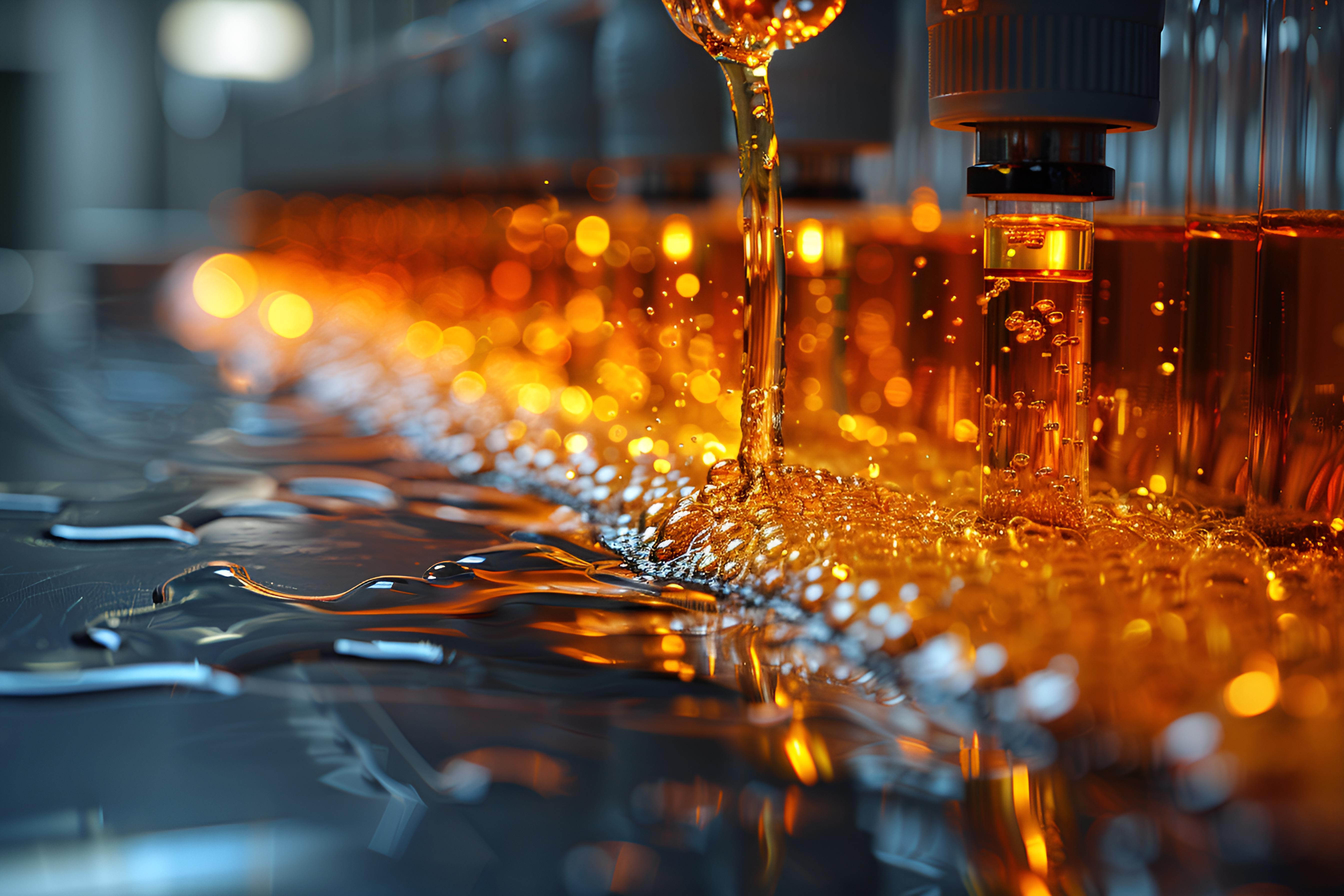Email format error
Email cannot be empty
Email already exists
6-20 characters(letters plus numbers only)
The password is inconsistent
Email format error
Email cannot be empty
Email does not exist
6-20 characters(letters plus numbers only)
The password is inconsistent


The Fascinating World of Agricultural Growth Regulators: A Deep Dive into Agrochemical Factories
Agriculture has always been a cornerstone of human civilization. From the early days of farming to modern technological advancements, the way we cultivate crops has undergone tremendous changes. One of the most interesting developments in agriculture is the use of agricultural growth regulators produced in agrochemical factories. These substances play a crucial role in enhancing crop yield, improving quality, and managing growth effectively. In this blog, we will explore the world of agricultural growth regulators, their significance, and how they are produced in agrochemical factories.
What Are Agricultural Growth Regulators?
Agricultural growth regulators, also known as plant growth regulators (PGRs), are substances that influence the growth and development of plants. Unlike fertilizers, which provide essential nutrients, growth regulators can modify physiological processes such as flowering, fruiting, and growth rate. They are often used to ensure that crops grow optimally, improving both quantity and quality.
Types of Growth Regulators
There are several types of growth regulators, each serving a specific purpose in plant development. Here are some common categories:
Auxins: These are primarily responsible for cell elongation and are used to promote root growth, fruit development, and apical dominance. Auxins can also help in the regeneration of plant tissues.
Gibberellins: These compounds promote stem elongation, seed germination, and flowering. Gibberellins are often used in crops like grapes to improve fruit size and quality.
Cytokinins: These regulators promote cell division and can delay leaf aging. Cytokinins are often applied to improve the yield and quality of various crops.
Ethylene: This gaseous hormone regulates fruit ripening and flower wilting. Ethylene is crucial for the post-harvest handling of fruits, ensuring they reach consumers at their best.
Abscisic Acid (ABA): Often involved in plant stress responses, ABA helps plants manage water loss and cope with drought conditions. It is vital for maintaining plant health in challenging environments.
The Role of Agrochemical Factories
Agrochemical factories play a pivotal role in the production of agricultural growth regulators. These facilities are designed to create various chemicals that are essential for modern farming practices. Let’s take a closer look at how these factories operate.
Manufacturing Process
Research and Development: Before any product reaches the market, it undergoes rigorous research and development. Scientists study plant biology and chemistry to design effective growth regulators. They conduct experiments to understand how these substances interact with plant systems.
Synthesis: Once a viable growth regulator is identified, the synthesis process begins. This involves combining different chemicals to create the desired compound. The synthesis must be precise to ensure that the final product is effective and safe for use.
Quality Control: Quality control is a critical phase in agrochemical production. Every batch of growth regulator is tested to ensure it meets safety and efficacy standards. This is crucial not only for the success of the product but also for the safety of consumers and the environment.
Packaging and Distribution: After passing quality control, the growth regulators are packaged and distributed to farmers and agricultural suppliers. Proper packaging is essential to maintain the integrity of the product and ensure it remains effective during transport.
The Importance of Quality in Agrochemical Production
The quality of agricultural growth regulators can significantly impact crop performance. High-quality regulators lead to better crop yields and quality, while subpar products can harm plants and reduce overall productivity. Agrochemical factories must adhere to strict regulations and standards to ensure their products are safe and effective.

Benefits of Using Agricultural Growth Regulators
The use of agricultural growth regulators offers several advantages, making them an invaluable tool for modern farmers:
Increased Crop Yield: By optimizing growth conditions, growth regulators can lead to higher yields. For instance, gibberellins can promote larger fruit sizes, while auxins can enhance root development.
Improved Crop Quality: Growth regulators can improve the quality of crops, making them more appealing to consumers. For example, cytokinins can enhance the color and texture of fruits and vegetables.
Efficient Resource Use: By regulating growth patterns, farmers can make more efficient use of resources like water and nutrients. This not only saves costs but also reduces environmental impact.
Pest and Disease Management: Some growth regulators can help plants resist pests and diseases, leading to healthier crops. For instance, abscisic acid can improve a plant's ability to withstand drought, making it less susceptible to stress-related diseases.
Challenges in Using Growth Regulators
Despite their benefits, the use of agricultural growth regulators is not without challenges. Here are some of the concerns associated with their use:
Regulatory Hurdles: The production and use of agrochemicals are heavily regulated. This can make it difficult for manufacturers to bring new products to market.
Environmental Impact: Improper use of growth regulators can lead to environmental issues, such as soil and water contamination. Farmers must be educated on the correct application methods to mitigate these risks.
Consumer Perception: There is often skepticism among consumers regarding the use of chemicals in agriculture. Transparency and education about the safety and benefits of growth regulators are essential to address these concerns.
The Future of Agricultural Growth Regulators
As we look to the future, the role of agricultural growth regulators is likely to evolve further. With advancements in technology, scientists are continually discovering new compounds and methods to enhance their effectiveness. Here are a few trends to watch:
Biotechnology: The integration of biotechnology in agriculture is opening new avenues for the development of growth regulators. Biopesticides and bio-stimulants are becoming more popular as they offer natural alternatives to synthetic chemicals.
Precision Agriculture: The rise of precision agriculture is changing how farmers apply growth regulators. By using data analytics and technology, farmers can apply these substances more effectively, ensuring optimal growth conditions.
Sustainable Practices: There is a growing focus on sustainable farming practices. As a result, agrochemical factories are exploring ways to produce eco-friendly growth regulators that have minimal impact on the environment.
Consumer Awareness: As consumers become more conscious of what they eat, there will likely be an increased demand for transparency in agricultural practices. Agrochemical factories will need to communicate effectively about the safety and benefits of their products.
Conclusion
Agricultural growth regulators are a fascinating aspect of modern farming that has revolutionized crop production. The work done in agrochemical factories is vital to producing these essential substances, which enhance growth, improve quality, and increase yields. Despite the challenges, the future of agricultural growth regulators looks promising, with advancements in biotechnology and sustainable practices paving the way for innovation.
As we continue to explore the relationship between agriculture and technology, it’s essential to understand the science behind growth regulators and their impact on food production. By embracing these advancements and promoting responsible use, we can ensure a more sustainable future for agriculture, benefiting both farmers and consumers alike.
In the ever-evolving landscape of agriculture, understanding and leveraging the potential of agricultural growth regulators will be crucial in meeting the growing demands of a global population. As we move forward, let’s celebrate the incredible journey of these substances from agrochemical factories to our plates, highlighting the important role they play in feeding the world.
